Flexible Seating Area
Flexible Seating Area
when producing a KAFO
A laminated orthosis is made of different materials that are combined with each other. The objective is to achieve maximum stability at a very light weight. Furthermore, however, aesthetics and comfort play an important role for the user as well.
A KAFO (Knee-Ankle-Foot Orthosis) with a flexible seating area offers the necessary stability when walking and standing and adapts to the body when sitting. This tutorial provides a step-by-step description of all the things that need to be considered.
-
Thigh Measurements
-
Step 1/1
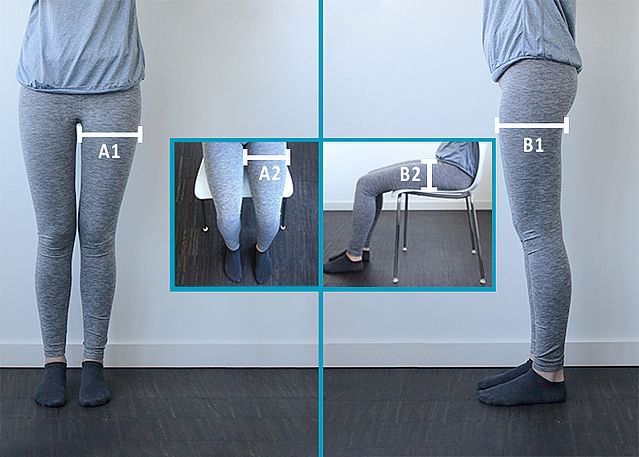
The thigh’s shape in a standing position is different from its shape in a sitting position. The width measured from the front is smaller in a standing position than in a sitting position (A1<A2), while the width measured from the side is larger in a standing position than in a sitting position (B1>B2). An orthosis’ flexible seating area can adapt to these different conditions.
-
Reinforcing the Femoral Shell
-
Step 1/13
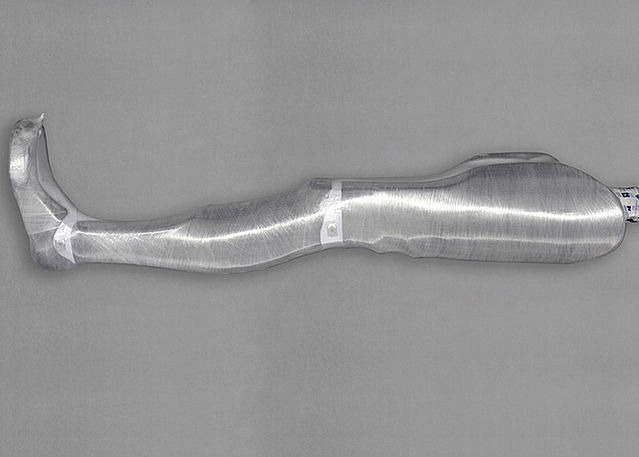
If the positive cast is still wet, insulate it with compression film first. Then, pull a PA reinforcement stocking over the positive cast. Now, the PVA film tube can easily be pulled over as base film layer.
Note: We recommend using a 0.10mm thick film layer.Step 2/13
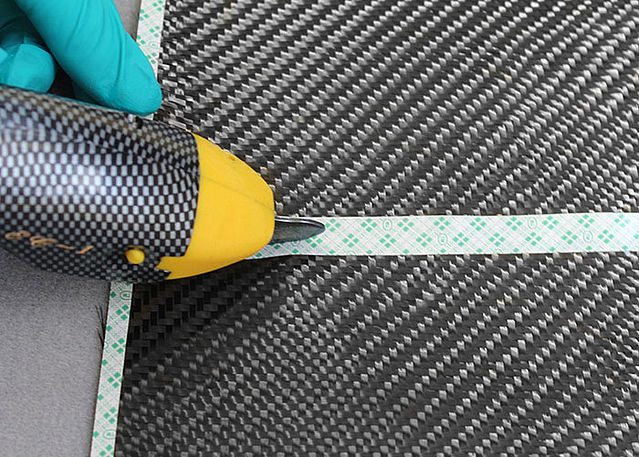
Please note! Due to the materials’ characteristics, always wear nitrile gloves while working with carbon or aramid fibre fabric.
We recommend using electrical scissors (e.g. Easy Cutter) to cut the separate fabric layers (carbon as well as aramid).
Note: Use adhesive transfer tape without backing material to secure the cutting edges. This way, the edges will not fray.Step 3/13
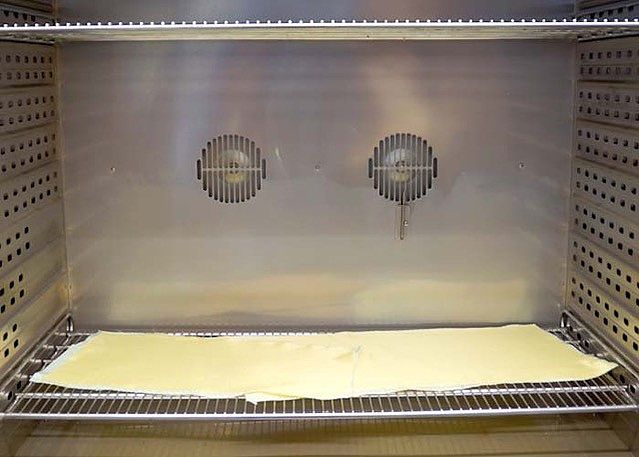
Dry the aramid fibre fabric at 120°C in an oven for at least one hour. This way, you remove any moisture that has been absorbed during storage and improve the fabric’s properties for further processing.
Step 4/13
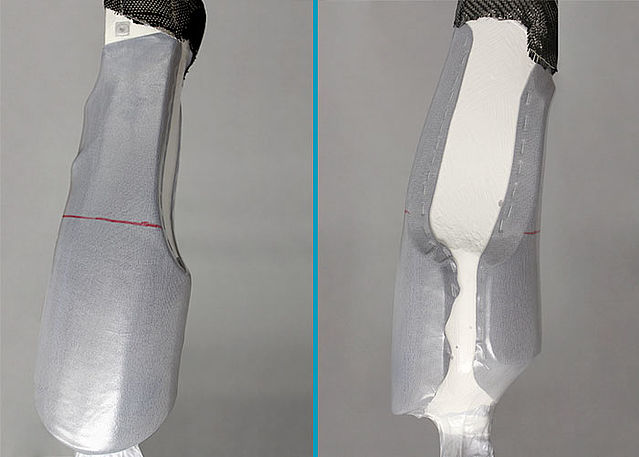
Mark the future partially flexible seating area on the film. Follow the modified edge.
Step 5/13
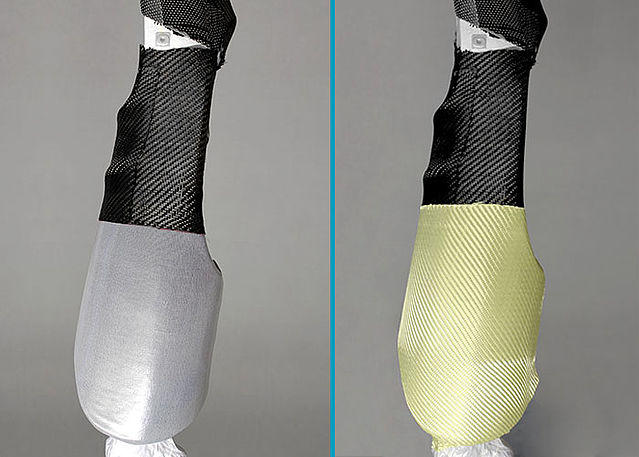
Attach carbon fibre fabric in order to reinforce the lower femoral shell area. Use as many layers of carbon fibre fabric as you need (this is an exemplary picture). Cut the aramid fibre fabric and use it for the seating area (mind the mark). Attach the aramid fibre fabric slightly over the carbon fibre fabric in order to form an optimal fibre composite. Use as many layers of aramid fibre fabric as you need (this is an exemplary picture).
Please note! Make sure to use the fibres stretched!Step 6/13
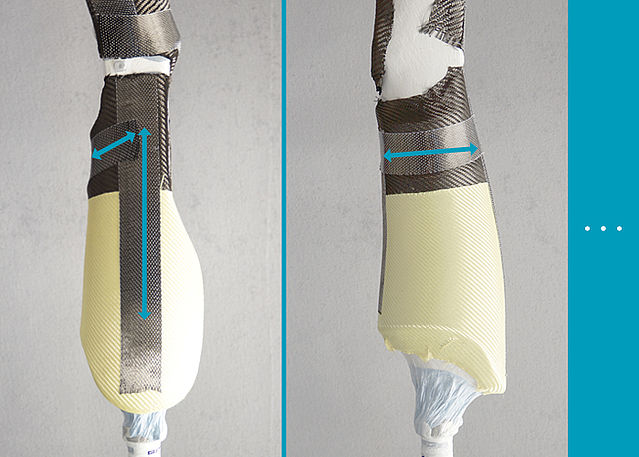
Attach unidirectional carbon fibre band along the profile core and along the band. Mind the direction of the fibres (arrows). Use as many layers of carbon fibre band as you need (this is an exemplary picture).
Please note! Make sure to use the fibres stretched!Step 7/13
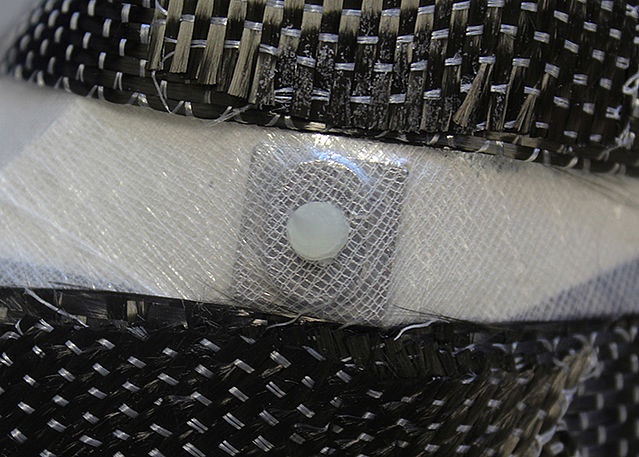
Apply some insulating wax to the threads of the joint retainers in order to seal them airtight for the following steps.
Step 8/13
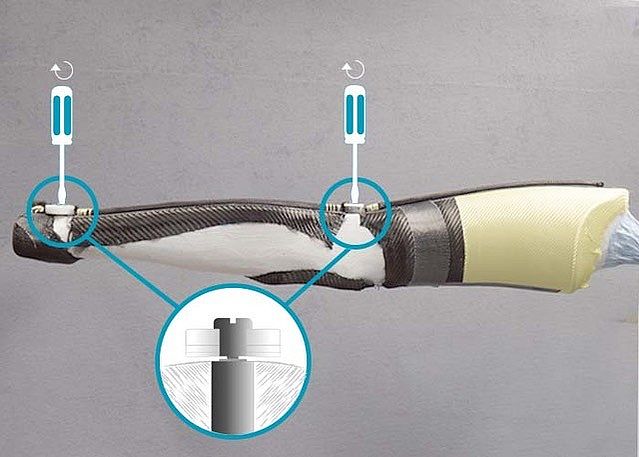
Mount the assembly/lamination dummies with the system strings to the joint retainers. Screw the retaining screws through the base film into the joint retainers. Make sure to screw in the screws only so far that they are gripped by the threads. This way, you can compensate a changed difference between the system joints.
Please note! If screws have to be unscrewed again, the base film may be damaged in the process!Step 9/13
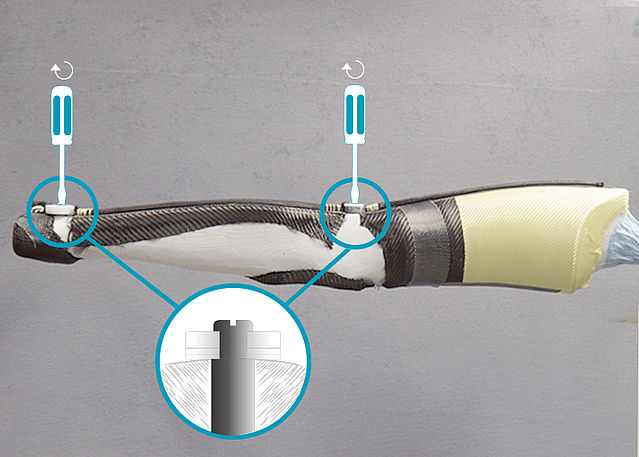
If the retaining screws are screwed in the joint retainers, you can tighten the screws entirely. Insulate all screw drives subsequently.
Step 10/13
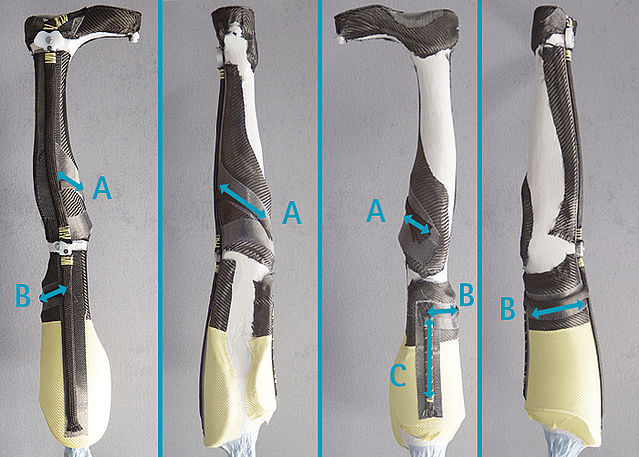
Attach the profile core with its carbon fibre braided tube to the model to reinforce the medial femoral shell (C). Attach carbon fibre braided tube to reinforce the tibial band (A) and carbon fibre braid to reinforce the femoral band (B). Make sure there is a direct connection to the system string or to the medial reinforced profile core.
Please note! Make sure to use the fibres stretched!Step 11/13
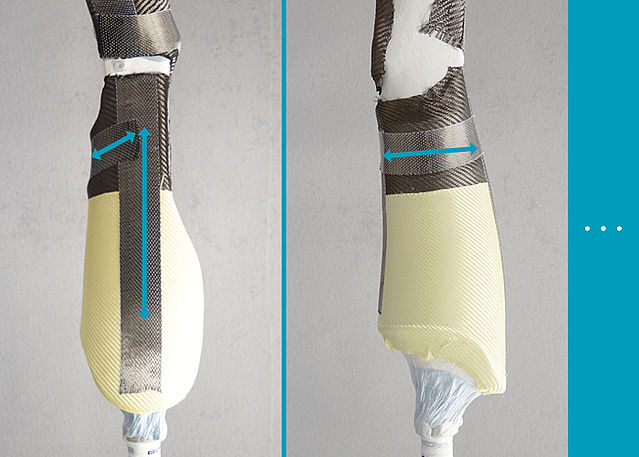
Attach unidirectional carbon fibre band to the thigh area again. Attach one strap along the carbon fibre braided tube to reinforce the lower femoral shell area, along the lateral system string as well as along the medial profile. Mind the direction of the fibres (arrows). Use as many layers of carbon fibre band as you need (this is an exemplary picture).
Please note! Make sure to use the fibres stretched!Step 12/13
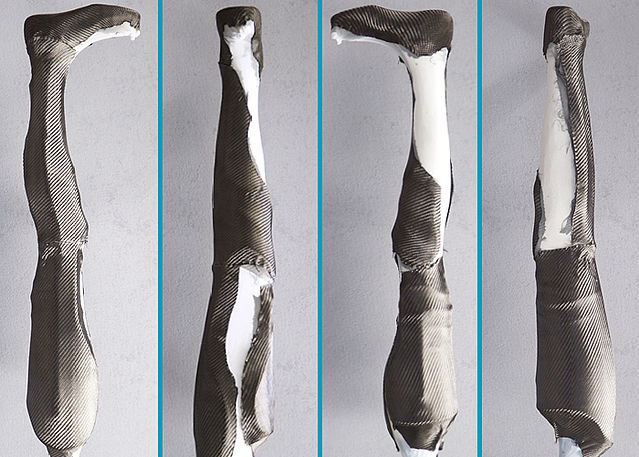
Attach a final layer of carbon fibre fabric to the lower and upper leg area. Cover half of the assembly/lamination dummy to avoid damaging the top foil later. Also, cover the aramid fibre fabric at the upper leg area.
Please note! Make sure to use the fibres stretched!Step 13/13
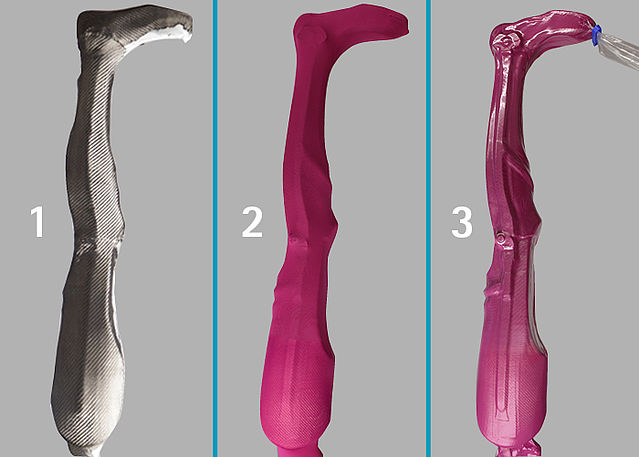
Finally, in order to secure the reinforcement layers, pull a decorative fabric (2) or a PA reinforcement stocking (for a carbon look) over the model (1). This way, the PVA film tube can easily be pulled over as top film layer (3).
Note: We recommend using a 0.10mm thick film layer.












-
Laminating the Femoral Shell
-
Step 1/2
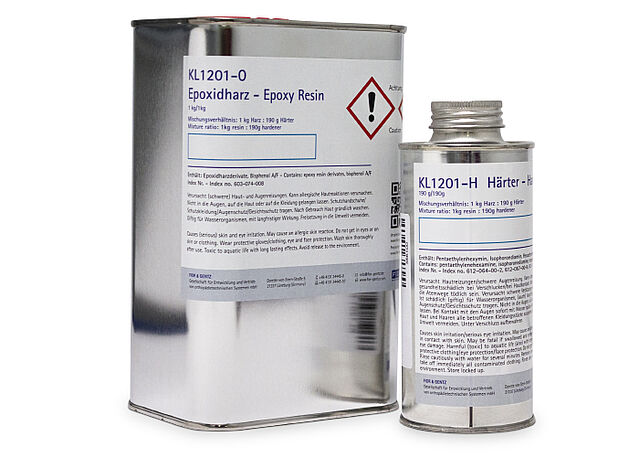
This production technique is especially adapted to our epoxy resin and hardener.
Important: Please consider the processing instructions and the safety data sheets for our epoxy resin and hardener. Precisely stick to the mixture ratio and thoroughly mix resin and hardener.Step 2/2
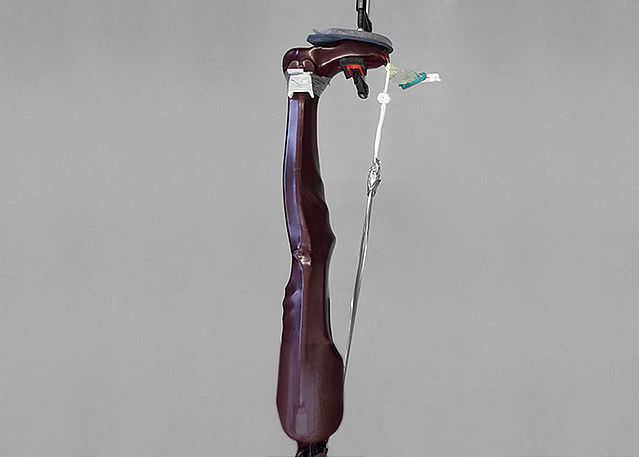
Let the fabrics soak completely and rub surplus resin out. Let the model harden over night (at least 10 hours), under vacuum and at room temperature.
Important: Also note the processing instructions for epoxy resin.

-
Cutting the Femoral Shell
-
Step 1/2
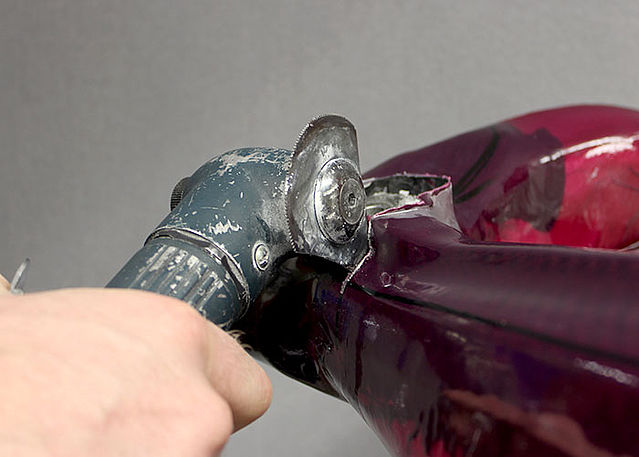
Use an oscillating saw to saw along the cutting lines in order to remove the orthosis parts from the model. You can see the recommended saw blade in the picture. This way, you can saw very closely to the system joint without damaging it.
Step 2/2
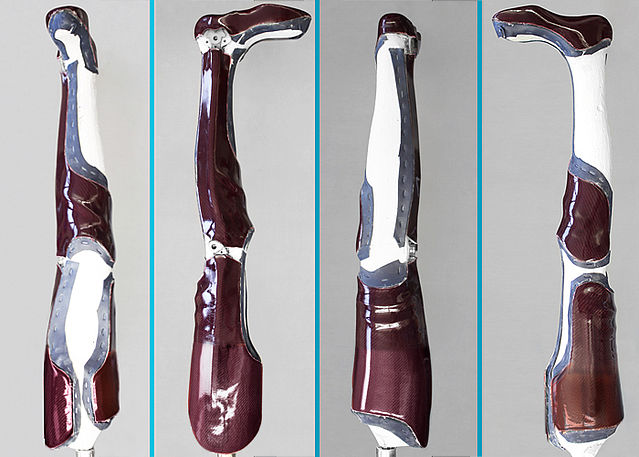
Remove all laminate parts which are no longer necessary. Then, you can remove the orthosis parts from the model.


-
Tempering and Grinding the Femoral Shell
-
Step 1/3
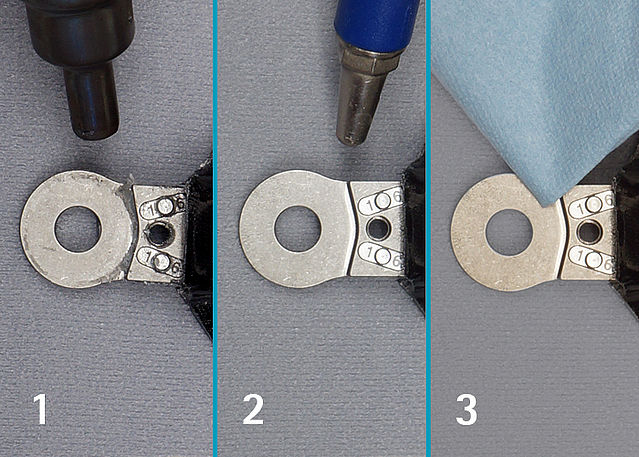
Clean the joints' upper and lower parts as well as the system stirrup before you temper the parts of the orthosis. Heat all wax residues with a hot air blower (1) and blow the liquefied insulating wax out of the hollows (2). Remove all residues with a cloth (3). Remove the PVA film tubes as well.
Step 2/3
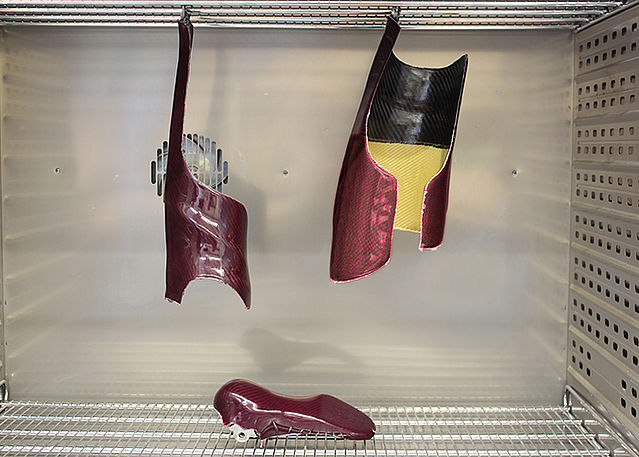
Temper all parts of the orthosis before you grind them. Place the orthosis parts into a cold convection oven and heat it up slowly. When tempered, the parts of the orthosis are stable and can be worked in the best possible way.
Important: Also note the processing instructions for epoxy resin.Step 3/3
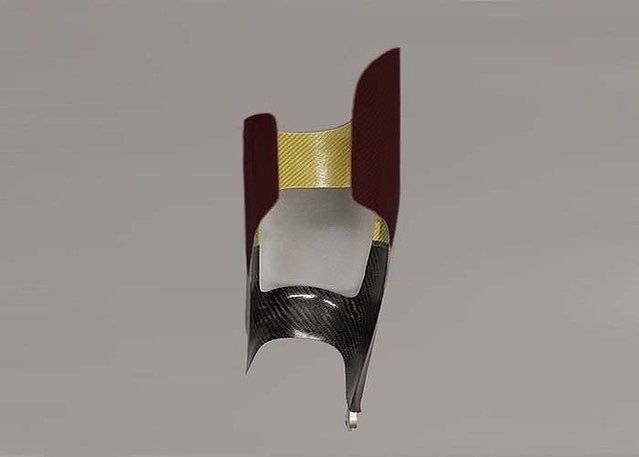
Grind the edges of the orthosis parts (e.g. with an angle grinder). However, it is essential to avoid predetermined breaking points in the metal!
Note: Apply some insulating wax to the aramid fibre edges and grind it with coarse sandpaper subsequently.


Last Update: 07 May 2020